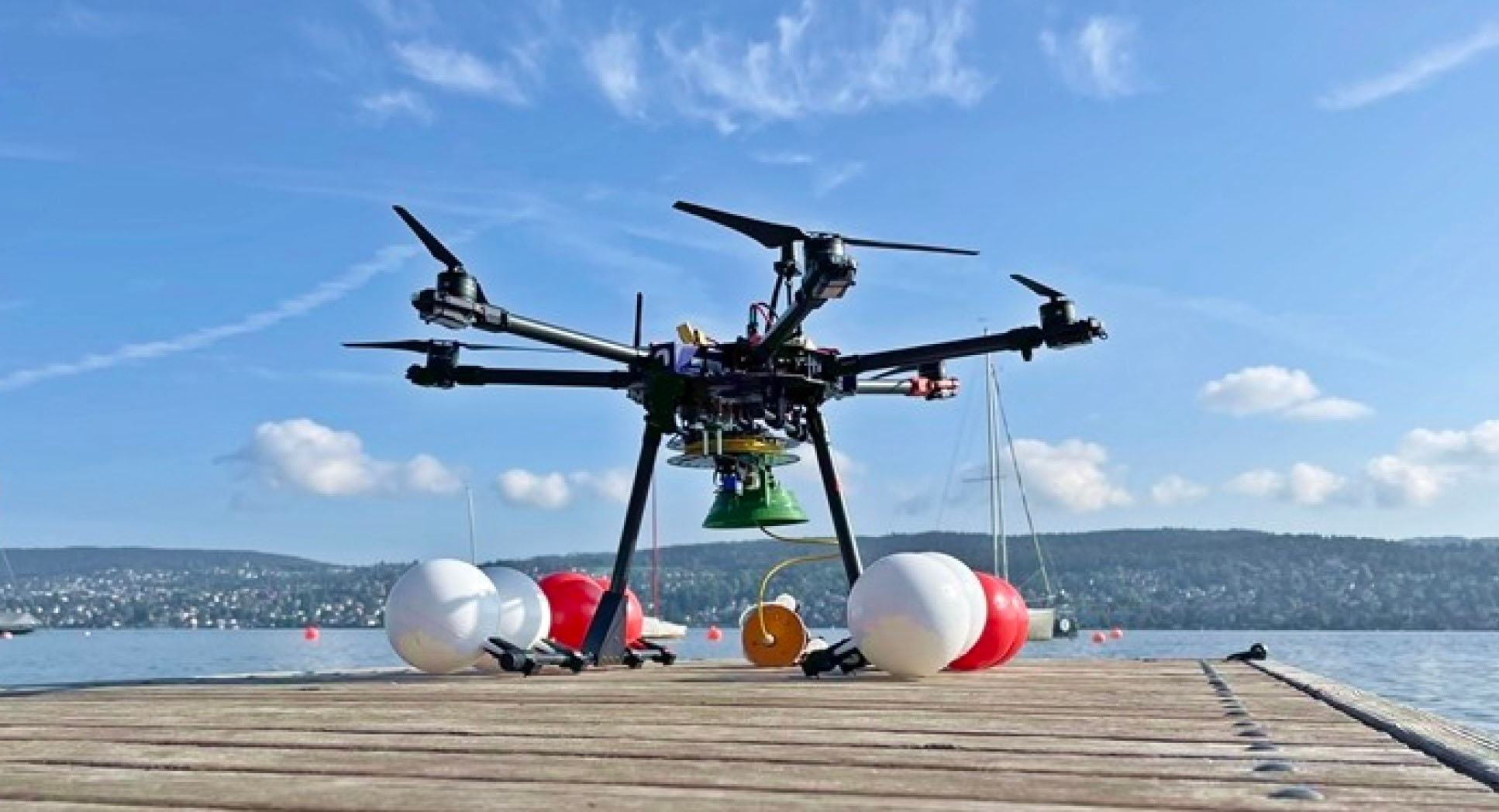| Jun 14, 2022 | |
Shape-shifting drone flies and dives to seek aquatic environmental clues (w/video) |
|
| (Nanowerk News) The ‘dual robot’ drone, developed at Imperial College London and tested at Empa and the aquatic research institute Eawag in Switzerland, has successfully measured water in lakes for signs of microorganisms and algal blooms, which can pose hazards to human health, and could in future be used to monitor climate clues like temperature changes in Arctic seas. | |
| The researchers developed the drone to boost our ability to quickly deploy monitoring drones to aquatic environments. The unique design, called "Multi-Environment Dual robot for Underwater Sample Acquisition" (MEDUSA), could also help monitor and maintain offshore infrastructure like underwater energy pipelines and floating wind turbines. | |
 |
|
| MEDUSA and its tethered pod poised for take-off on Lake Zurich. (Image: Aerial Robotics Lab, Imperial College London) | |
| Professor Mirko Kovac, Principal Investigator on the project and Director of the Aerial Robotics Lab at Imperial and Head of the Robotics Centre at Empa said: “MEDUSA is unique in its dual robot design, with a flight component that reaches difficult-to-access areas and a diving component that monitors water quality. Our drone considerably simplifies robotic underwater monitoring by performing challenging tasks which would otherwise require boats.” | |
| The researchers have tested MEDUSA in both laboratory environments at Imperial, Empa, and in field environments including lakes in Switzerland. | |
Dual design |
|
| The drone flies using remotely controlled multirotors - lift-generating blades that rotate around a central vertical mast like helicopter blades. Using multirotors means MEDUSA can travel long distances with high payloads, fly over obstacles, carry payloads and manoeuvre through difficult terrain. | |
| The multirotor flies to a hard-to-reach aquatic environment before landing on the water and deploying its tethered mobile underwater pod with attached camera and sensors to depths of up to ten meters. The drone operator remotely adjusts the pod’s depth and three-dimensional position in the water using buoyancy control and jets. All the while, the user is guided by real-time video and sensor feedback from the pod. | |
| Once samples are taken, the drone coils the tether to reunite with the pod before taking off and flying back to the user. | |
| While the underwater pod design is new, the aerial drone design is an industry standard, meaning MEDUSA systems can be easily constructed and deployed using industrial operational frameworks. | |
Aquatic climate clues |
|
| Ecologists typically use boats to reach and monitor aquatic areas, but MEDUSA could help reduce the risk to humans of travelling to difficult-to-reach aquatic environments. This could be particularly useful in the Arctic Ocean, where changes in ocean temperatures, acidity, salinity, and currents can offer critical clues about the global climate crisis. | |
| Professor Kovac from Imperial’s Department of Aeronautics said: “We have much to learn from the Earth’s water: by monitoring ecological parameters we can identify trends and understand the factors affecting water quality and the health of the ecosystem in a changing climate. | |
| “MEDUSA’s unique ability to reach difficult places and collect aquatic images, samples and metrics will be invaluable for ecology and aquatic research and could support our understanding of local climate in difficult-to-access environments like the Arctic.” | |
| The next round of testing will involve developing shape-shifting metamorphic drones within the newly approved ERC Consolidator grant, called ProteusDrone, with international partners at Empa. |
| Source: Imperial College London |
We curated a list with the (what we think) 10 best robotics and AI podcasts – check them out!
Also check out our Smartworlder section with articles on smart tech, AI and more.

